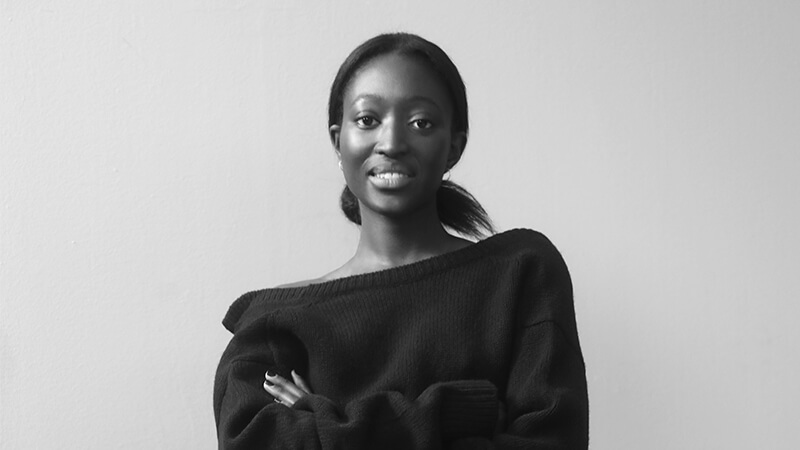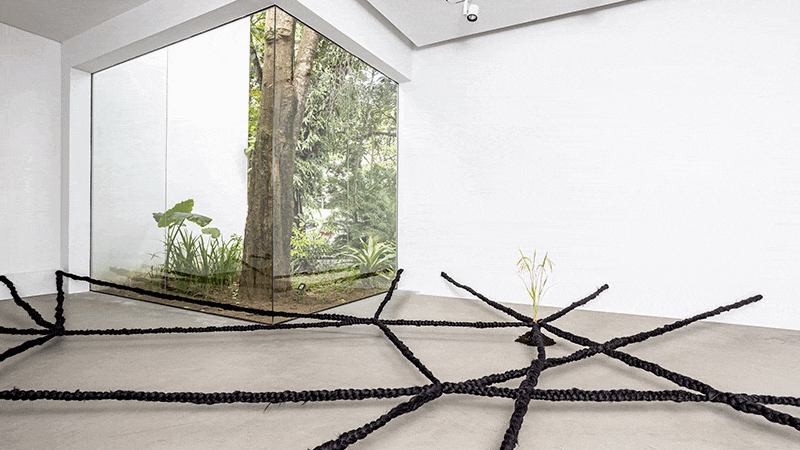“Instruments Of Resistance And Vindication” – The Powerful Work Of Senegalese-Italian Artist Binta Diaw
When the visual artist Binta Diaw was 11 years old, she came across a drawing of the Brooks, an 18th-century slave trade ship. The image, commissioned by British abolitionists in 1788, portrayed people squeezed on board the vessel, and was aimed at raising awareness of the inhumanity of slavery. “It stayed with me,” she says of the picture. “Over the years, I internalised it in a way I wasn’t even aware of.”

In 2019, Diaw made a replica of the drawing from earth and seeds. The installation, Chorus Of Soil, was “a temple dedicated to the memory of all those women, men and children who lost their lives during the crossings.” But it also referenced the present. She used melon seeds – a nod to the so-called Mafia-operated plantations in Southern Italy, where thousands of migrants are being systematically exploited today. “It was my way to remember the past and call out what’s essentially just a different kind of slavery,” she explains. “My contribution to our collective history.”
Born in Milan to Senegalese parents, Diaw makes this contribution the focus of her art. Using textiles, found objects and natural materials, her works explore themes of migration and immigration, identity and the Black female body, challenging the Eurocentric gaze and, often, questioning perceptions of Italianness and Africanness.
“I am interested in exploring Blackness both through my personal experience as a Black Italian woman – something that’s too often still regarded as ‘exotic’ and ‘other’ – and through the lenses of archival research, Afro-diasporic communities and intersectional feminism,” she says. “I want to take care of myself and of those who see themselves in what I do.” Above all, that means deconstructing the past. “So much of Black people’s narrative never made it into history books,” Diaw says. “I am keen to recontextualise our voices and give us the space we’ve been denied.”
In some of her most compelling works, Diaw uses hair – African hair braiding in particular – to reclaim that space. For her 2020 installation Uati’s Wisdom, she crafted a huge tentacle-like sculpture out of hair extensions inspired by the West African water goddess Mami Wata, to celebrate radical traditions of matriarchy. Dïà s p o r a (2021) featured a giant black wave representing a cartography of the routes of marronage, and spotlighting the importance of African hair in transmitting vernacular knowledge.
“Just like with bodies and lands, hair too has been subject to colonisation,” she says. “Over centuries, it has assumed functions, meanings and values dictated exclusively by Eurocentric aesthetic norms. I’m trying to break those norms, turning hair into an instrument of resistance and vindication.”
Her practice has struck a chord. The 28-year-old’s work has appeared in galleries across Europe and Africa, and she won the prestigious Pujade-Lauraine/Carta Bianca prize last year. This month, she’ll unveil a revisited, site-specific version of Chorus Of Soil at the Liverpool Biennial.
“Liverpool is where the Brooks departed from,” Diaw says. “So, it’s important for the installation to address that. I’d like it to be a moment of regeneration – another personal attempt to correct things.”
The Liverpool Biennial runs from 10-17 June 2023
Marianna Cerini is a freelance writer for publications including Conde Nast Traveler, BBC Travel, CNN Style and Fortune




